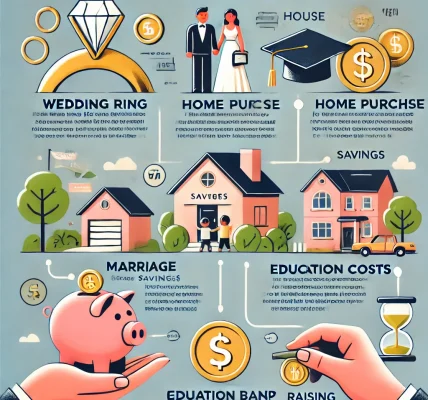Introduction
Budgeting is the cornerstone of financial stability and success. It allows individuals to manage their income efficiently, reduce unnecessary spending, and increase savings for future financial goals. A well-structured budget can help individuals avoid financial stress and build a secure financial future.
In this guide, we will explore smart budgeting techniques to help you save more and spend wisely while maintaining financial discipline. Whether you are just starting your financial journey or looking to refine your existing budgeting strategy, this guide will provide actionable insights to help you make informed decisions.
Step 1: Understand Your Financial Situation
Before creating a budget, it is essential to assess your current financial standing. This includes understanding your income, expenses, and financial obligations.
Key Financial Aspects to Consider:
- Total Monthly Income: This includes salary, freelance earnings, rental income, dividends, and any other sources of income.
- Fixed Expenses: Regular expenses such as rent, mortgage payments, insurance, loan repayments, and utility bills.
- Variable Expenses: Costs that fluctuate, such as dining out, entertainment, shopping, and transportation.
- Savings and Investments: The portion of income set aside for retirement, emergency funds, and long-term financial goals.
How to Analyze Your Expenses:
- Track spending for at least one month to understand where your money is going.
- Use budgeting apps or spreadsheets to categorize expenses.
- Identify areas where unnecessary spending can be reduced.
Step 2: Set Realistic Financial Goals
Defining financial goals helps in creating a budget that aligns with your priorities. Goals should be SMART (Specific, Measurable, Achievable, Relevant, and Time-bound).
Types of Financial Goals:
- Short-Term Goals (0-2 years): Paying off credit card debt, building an emergency fund, or saving for a vacation.
- Medium-Term Goals (3-7 years): Saving for a home, buying a car, or funding further education.
- Long-Term Goals (8+ years): Retirement savings, wealth accumulation, or planning for children’s education.
Step 3: Choose a Budgeting Method
There are several effective budgeting strategies that cater to different financial needs. Choose a method that aligns with your financial goals and lifestyle.
Popular Budgeting Methods:
- 50/30/20 Rule:
- 50% of income for necessities (housing, utilities, groceries, insurance)
- 30% for discretionary spending (entertainment, hobbies, travel)
- 20% for savings and debt repayment
- Zero-Based Budgeting:
- Every dollar is assigned a purpose.
- Ensures income minus expenses equals zero by allocating funds efficiently.
- Envelope System:
- Allocate cash into different envelopes for each category (groceries, rent, transportation, etc.).
- Helps prevent overspending by sticking to pre-set amounts.
- Pay Yourself First Method:
- Prioritize savings and investments before allocating funds for other expenses.
- Ensures financial security by focusing on future wealth.
Step 4: Reduce Unnecessary Expenses
Cutting down unnecessary expenses is key to maximizing savings. Identify areas where you can trim spending without compromising on essentials.
Practical Ways to Reduce Spending:
- Cancel Unused Subscriptions: Review memberships and subscriptions that are no longer needed.
- Cook at Home: Reduce dining out and prepare meals at home to save on food costs.
- Use Public Transportation: Opt for carpooling or public transport to reduce fuel and maintenance costs.
- Shop Smart: Compare prices, use discount coupons, and take advantage of sales and cashback offers.
- Avoid Impulse Purchases: Stick to a shopping list and avoid unnecessary spending.
Step 5: Build an Emergency Fund
An emergency fund acts as a financial safety net for unexpected expenses such as medical emergencies, car repairs, or job loss.
How to Build an Emergency Fund:
- Start by saving at least three to six months’ worth of living expenses.
- Keep the fund in a high-yield savings account for easy accessibility.
- Avoid using the emergency fund for non-essential expenses.
Step 6: Manage Debt Wisely
Debt management is a crucial part of budgeting. Reducing debt improves financial security and allows for better money management.
Effective Debt Repayment Strategies:
- Debt Snowball Method: Pay off the smallest debts first to gain motivation before tackling larger debts.
- Debt Avalanche Method: Focus on paying high-interest debts first to minimize total interest paid.
- Refinancing: Consider refinancing loans to secure lower interest rates and reduce monthly payments.
- Limit Credit Card Usage: Use credit cards responsibly and pay balances in full each month to avoid interest charges.
Step 7: Automate Savings and Bill Payments
Automating financial transactions ensures consistency and prevents late payments or missed savings contributions.
Benefits of Automation:
- Ensures timely bill payments to avoid penalties.
- Facilitates regular savings and investment contributions.
- Reduces the temptation to spend money allocated for savings.
Step 8: Use Technology to Track Your Budget
Several budgeting apps and tools help manage finances efficiently by tracking income, expenses, and savings goals.
Popular Budgeting Apps:
- Mint: Provides real-time expense tracking and budgeting insights.
- YNAB (You Need A Budget): Encourages proactive financial planning.
- PocketGuard: Prevents overspending by showing available funds.
- GoodBudget: Uses the envelope budgeting method digitally.
Step 9: Review and Adjust Your Budget Regularly
A budget is not static and should be reviewed periodically to reflect changes in income, expenses, and financial goals.
How to Maintain an Effective Budget:
- Review monthly spending and identify areas for improvement.
- Adjust budget allocations based on income fluctuations.
- Set aside time each month for financial check-ins.
Conclusion
Smart budgeting is a powerful tool for financial success. By understanding your financial situation, setting clear goals, using effective budgeting methods, and making conscious spending choices, you can achieve financial stability and long-term prosperity.
Remember, budgeting is a continuous process that requires discipline and adaptability. The key to success is consistency and commitment. Start today and take control of your financial future!



